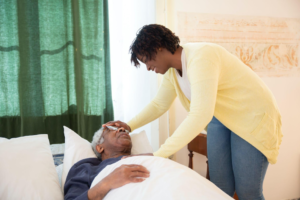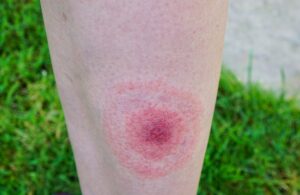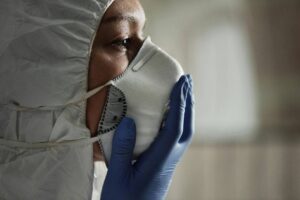
A medical evaluation is not just a hoop you have to jump through—it’s about protecting workers. If your employees might wear respirators then you need to identify who needs to be medically evaluated, who may be excluded from needing an evaluation, and how to properly document everything.
This article makes it easy so that you can make straightforward and confident decisions.
Who OSHA Requires
If work tasks are required to wear a respirator per OSHA 1910.134, a medical evaluation must be conducted before an employee can use one. The medical evaluation process typically consists of a medical evaluation questionnaire (MEQ) to be completed by the worker, followed by review by a PLHCP (physician or licensed health care professional).
Voluntary vs Mandatory Use
There are cases (behavioral or based on safety culture) where employers allow respirators, but they are not actually required based on the exposure level. This is where the requirements will vary a little, and it’s important in some cases to delineate between “use” that is voluntary and use that is required by task. If respirator use is mandatory, then respirator clearance is required prior to fit testing, i.e. to use assigned respiratory protection. If it is allowed a respirator for voluntary use (as described in the OSHA citation), then it must be evaluated. OSHA allows a lighter set of requirements voluntarily used but still has steps for employees to voluntarily wear respiratory protection (respirators).
- Mandatory use: If job tasks require a respirator, there must be a medical evaluation before any fit testing for use. This includes not just tight-fitting respirators, but also SCBAs, unless a SCBA is used in an emergency or high-hazard workplace.
- Voluntary use of filtering facepieces (dust masks): A medical evaluation is not required for your employees to voluntarily wear a filtering facepiece. However, you will need to provide information from appendix D of the OSHA requirements to your employees and ensure that the device is not adversely influencing the workplace.
- When employees voluntarily use other respirators such as elastomeric (see here for more details) and PAPR, they need to have a medical evaluation done and proper program details like cleaning, training, and storage setup.
Exemptions and Special Cases
An employee using a dust mask voluntarily (and not due to job site requirement) is usually exempt from a medical evaluation. However, once that respirator use becomes a job requirement, the employee is required to have an evaluation, even if it is only a portion of the shift.
There are also trespassers for re-evaluation: an employee reporting symptom, a supervisor observes employee having difficulties, the work condition changes (heat, workload, types of cartridges), and the PLHCP requests a re-evaluation from the previous MEQ. Short term/occasional required use counts as “required” so even short-term things, like seasonal or emergencies, should be planned beforehand. If unsure, communicate with your PLHCP to have a clear determination documented in the employee’s file.
Industries With Stricter Rules

Some have more strict expectations for a higher risk or because of overlap. Even if OSHA sets the baseline, other agencies, clients, site owners may have a different set. Check what applies to your jobsites, contracts before stating your policy.
- Healthcare: Programs usually revolve around fit and turnover time with a typical tie between a tight-fitting N95 (https://en.wikipedia.org/wiki/N95_respirator), vaccination status, and exposure control policies concerning N95 and fit testing records (even for the employee who is not part of the full evaluation program).
- Construction and manufacturing: Work with silica, metals, coatings or isocyanates may trigger project air monitoring (air sampling) or breathing zone monitoring and re-evaluations may occur routinely.
- Emergency response and hazardous waste (HAZWOPER): SCBA/PAPR readiness, documented PLHCP review, and often a walk-through drill for a scenario is the common norm,
- Oil, gas, and confined spaces: Pre-placement evaluation and readiness, plus being rescue ready with documentation for recordkeeping among contractors frequently required as well.
How to Check Requirements
First, you will determine if the task requires a respirator based on your hazard assessment, air monitoring data, and manufacturer/process guidance. Once you know the employee will be required to use a respirator, then the medical evaluation will need to be arranged before fit testing. If you are looking for a quick turnaround time, use a questionnaire regarding medical evaluations online and once completed, confirm results and route to PLHCP for final assessment and determination prior to fit testing.
Name the administrator of the program to maintain the roster, dates for training and digital records and documentation of education. Place the recommendation of the PLHCP in the employees file, with their fit test card for documentation. Store everything in an efficiently secured electronic portal as well as training attestation. When there is a change in the job site, equipment or status of the health status/risk, ask if PLHCP needs to be re-evaluated and make updates on fit test records if needed.
By aligning the medical evaluations with hiring employees, job change requirements, and once a year in the program, you are reducing risk, passing audits without problems, and supporting your people if there are not questions.






